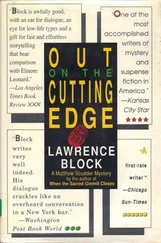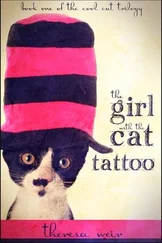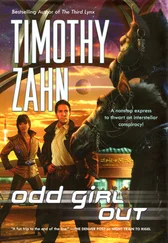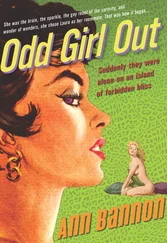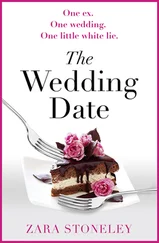The poem is not particularly appropriate as Lien does very little judging of anything or anyone, but sometimes it’s easier just to write something standard, and that’s fine if the handwriting and the stuck-in pictures are beautiful, so Lien writes something moral and approving in Rini’s album as well.
And then there is Auntie Riek, with cousin Bennie and the two little ones, Nico and baby Robbie, for whom Lien sometimes helps to care. There is a photo of Auntie Riek and Mamma squeezed onto a wooden chair, with Bennie (thumb in mouth) and Lien (with a white bow in her hair) perched precariously on their laps.
Mamma sits on one arm of the seat, holding Lien with her left hand and Riek with her right. The chair looks terribly unsteady, the whole gang likely to topple over any minute, and though Mamma maintains her serious camera smile you can see that her sister-in-law is starting to laugh.
A favorite place is Uncle Manie’s ironware shop nearer the center of the city, filled to the ceiling with racks of screws, door knockers, hammers, and bicycle bells. One time Lien is given a beautiful pair of skates there, with white leather tops and long, sharp, silvery blades. When it is winter Lien will be able to try them. She can already see herself gliding without effort past other children, racing ahead in the sunshine, turning a pirouette on the ice.
—
WAR IN MAY 1940, when Holland is invaded, comes out of a blue sky, in Lien’s memory. Standing with her parents she sees planes up above and they tell her, “This is the war.” Apart from this, not much happens. There are German soldiers who sit at tables outside cafés and sometimes walk the streets. They are friendly. It is only slowly that things start to change.
From the autumn of 1941 onward the names in Lien’s poesie album become different. Or rather, they become more the same. Roosje Sanders, Judith Hirch, Ali Rosenthal, Jema Abrahams: those who write their names from September ’41 to March ’42 are all unmistakably Jewish, and this is because Lien now has to go to a Jewish school. The poems they write are still about friendship, angels, and flowers, but the pastel cut outs of bouquets and girls in crinolines, which were stuck all over the early pages, are now rare. On September 15, 1941, new signs appear outside libraries, markets, parks, museums, and swimming pools: FORBIDDEN FOR JEWS.
Two
It is January 2015. Having met with Lien for one day in December, I have come back to the Netherlands for a few weeks to continue our interviews. We have also decided that it would be good for me to visit the places where she lived. This is to spark her memory with photos and also to get a sense of the locations myself. So I am on my way to The Hague.
Historically speaking, The Hague was always considered a village and not a city. The quiz question, What is the capital of the Netherlands? is difficult to answer because the Dutch talk of a “head city” rather than of a “capital,” and the head city of the Netherlands is indisputably Amsterdam. The Hague is merely the seat of government. Though chosen as the meeting place of the States General of the new republic at the end of the sixteenth century, it was not granted the dignity of a university or even a town wall. The Protestant representatives of the seven provinces who broke away from the Spanish Empire met there precisely because it was neutral and unthreatening. They held their meetings in a moated fortress, which is today still the home of the Dutch parliament. In The Hague there is no great port or tradition of trading, but all the same, its status as the birthplace of the Low Countries is apt. The city sits on sand dunes and the remains of a boggy shoreline that was first drained by subsistence farmers in the ninth century. Like so much of Holland, it was raised by human labor from the North Sea.
Heading for The Hague I drive along motorways that slice through the old seafloor, a monochrome carpet of identical squares. When compared to England, where I have lived since I was a teenager, the Dutch countryside feels seamlessly modern in its flat, perfectly organized uniformity. Every few minutes I pass a neat farmhouse of dark reddish-brown brick with a sharply pitched roof. In the yards of these farmhouses there are spotless tractors and feed silos and none of the agricultural lumber that is found on the other side of the North Sea. Even the livestock looks standardized: rectangular cows all stamped with variations of the same black and white. Straight, silvery ditches cut up the land into even portions that stretch into the morning mist.
As I reach the edge of the city, the farms are replaced by a succession of sleek steel-and-glass structures: car showrooms, distribution centers, noise barriers, and greenhouses inside which there is a controlled environment of carbon dioxide and light. These buildings, just as much as the farms, feel almost artificial. Holland, when seen through a car window, looks devoid of history of any kind.
Having turned off the motorway, I soon find myself in a district of tired redbrick terraced housing. I park on the Pletterijstraat, the street on which Lien used to live. At the start of the last century, when these houses were built, the city was booming. Posters with Art Nouveau illustrations promoted its virtues as a residential haven to farming folk from the overcrowded countryside and to immigrants from the colonies and the Near East. The Hague, suddenly, was not just a city but a city for the world. In 1900 it became the home of what would soon be called the International Court of Justice, housed in splendor at the newly constructed Peace Palace. As it had been at its origin, it was, once again, a neutral meeting place for great powers. The Pletterijstraat, completed in 1912, held its place in this city of hope.
Today the street is still mainly residential, with a corner shop and a couple of independent garages that sell secondhand cars. The ground-floor flat at number 31 is now a small therapeutic gymnasium with the logo FYSIO FITNESS splashed in yellow on its frosted glass. I press the buzzer and wait until a tall young man in a tracksuit opens the door. He is one of the gym instructors. Behind him in the lobby are two older gentlemen in exercise clothing: bunched-up shorts, faded cotton jumpers, bright sneakers, and socks that are a bit too long.
I am left on my own in the little entrance hall, with the class getting going in what used to be Mrs. Andriessen’s room. I can hear the exercise class in progress, with the instructor saying encouraging things.
To the right there is the cupboard where Lien hid when she discovered that St. Nicholas was not real. In front of me is her old bedroom, now an office with health-care qualifications pinned up on the walls. The windows let in some pale January light.
It does not take long to see the three-room apartment. Everything is decent, ordinary, and of a reasonable size. Behind the office is the bedroom of Lien’s parents, which now contains a massage table and an anatomical skeleton wearing a red knit hat with a pom-pom. Connected to this is a galley kitchen with a kettle and some fitness leaflets on the worktop. The scrubby backyard has become a storage place for random objects: a metal bin, a snow scoop, a bicycle, some cinder blocks, a stack of plates, and some broken chairs. Looking over the fence I try to work out where Charles de Jong’s little factory would have stood.
Having been in the flat for less than ten minutes, I make my way out, waving politely to the gym instructor and the old men.
—
BACK IN THE STREET and with nothing obvious to do next, I suddenly ask myself what I’m up to. Although I work as an academic, I am no expert on Dutch history or on Nazi persecution. Is visiting the addresses where Lien’s story takes me really research? Slightly on edge, with that question hanging over me, I begin to walk down the street.
Читать дальше

